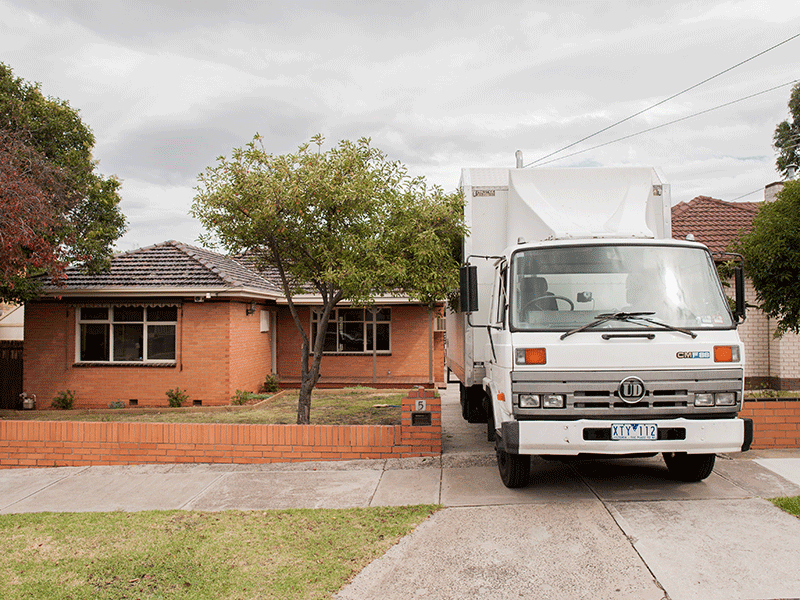Are you looking for tips on how to make moving house easier? Check out the best advice on packing, unpacking
Loading a moving truck can feel like a real-world game of Tetris, but with a little know-how, a DIY move doesn’t have to be as frustrating.
Industry experts from Sydney-based packing and unpacking services and hire company Hertz, share tips on how to load and drive a moving truck.
Lee Hamlin from Moving House Services says loading a truck properly comes down to planning and placement.
First, ensure there is parking available for the truck, as close as possible to the premises. Hamlin recommends using a walk-up ramp if possible. “A walk-up ramp allows you to walk in and out of the truck each time. A tail lifter is often slow and inefficient,” she says.
In her role as a professional packer, Hamlin starts with a tour of the property being vacated, to assess the contents and make a plan.
“It’s best if the most commonly-used boxes for moving are used and that the boxes are packed professionally, so they’re not too heavy and are easy to move,” she says.
Big wardrobes go in the truck first, Hamlin says. “Place a soft tie around the entire wardrobe, to stop the door from coming open. I load from the front of the truck, on the right-hand side, facing the doors to the wall, then covering the doors with a furniture pad to completely protect it,” Hamlin says.
Try to keep the height, from right to left, even. “The next obvious (thing to load) would be a lounge. I wrap it in a plastic before it leaves the house, then stand it beside and behind the back of the wardrobe. Place it on a blanket on the floor and then wrap another one around it.”

A walk-up ramp is quicker and more efficient to use than a tail lifter. Picture: Kate Griffin
Put cushions or light objects on top of the wardrobe and lounge, to fill the void to the roof. Next, the fridge, washing machine or dryer goes in, to maintain the height, then again put lighter items on top.
“The next two layers deep, working from front to back, I start right to left again, and I may put two tea chests in height then two book cartons on top, this allows me to fill all the space evenly and give me a level platform for loading dining chairs on top,” Hamlin says.
“Each chair is wrapped in a pad, then married inside to another, so they fit tight. The first one goes on its back, with legs to the right, then the next one inside and so on. This will fill the space level and tight to the roof. I keep working layers back, bigger and heavier items at the bottom and lighter items on top from right to left,” she says.
The “good side” of furniture, like tables and white goods, should be put “to the wall” of the truck, with a pad or two to protect.
“Try to keep rugs and beds to the back of the truck, as this allows you to put the rug down first, before the other furniture comes into the new house, and allows the bed to be made first. Artworks are wrapped in special bubble wrap and pot plants should go on the back of the last load,” Hamlin says.

Consider packing anything fragile, like mirrors, separately so they don’t break. Picture: Getty.
When it comes to fragile items like TVs or mirrors, consider a separate load, Hamlin says.
The weight in the truck should be distributed evenly and not too heavy at the front, Hamlin says. “Technically, it should be heavier over the back wheels.”
A spokesperson for hire company Hertz says an 18-cubic metre truck can generally hold the contents of a small three-bedroom house or large two-bedroom unit, not including the contents of the garage or shed. The spokesperson shares the company’s tips for ensuring a safe trip:
- Always use the right type of fuel.
- Adjust the drivers’ seat, steering wheel and mirrors.
- Ensure the rear or side cargo door are locked.
- Read the operating instructions for lifts carefully.

Trucks are taller than cars, so be aware of low clearance overpasses or low-hanging trees when driving. Picture: Peter Unger
“Trucks are significantly taller than cars, so note clearance signs at bridges and overpasses and be careful of drive-through restaurants, banks, motels, hotels, covered petrol stations and even your own house,” the spokesperson says.
Drivers should also be aware of low-hanging tree limbs and telephone lines. “If you are unsure of the clearance, get out of the truck and look or ask someone outside to guide you. The height clearance of the rental truck is marked on the inside top centre of the windscreen.”
As trucks are longer and wider than cars and have a wider turning radius, take turns slower, to avoid the load shifting and potentially causing damage.
“Never follow too close. Trucks are heavier than cars and need more braking distance. Also, obey truck lane and route restrictions and rules for commercial vehicles,” the spokesperson says.




